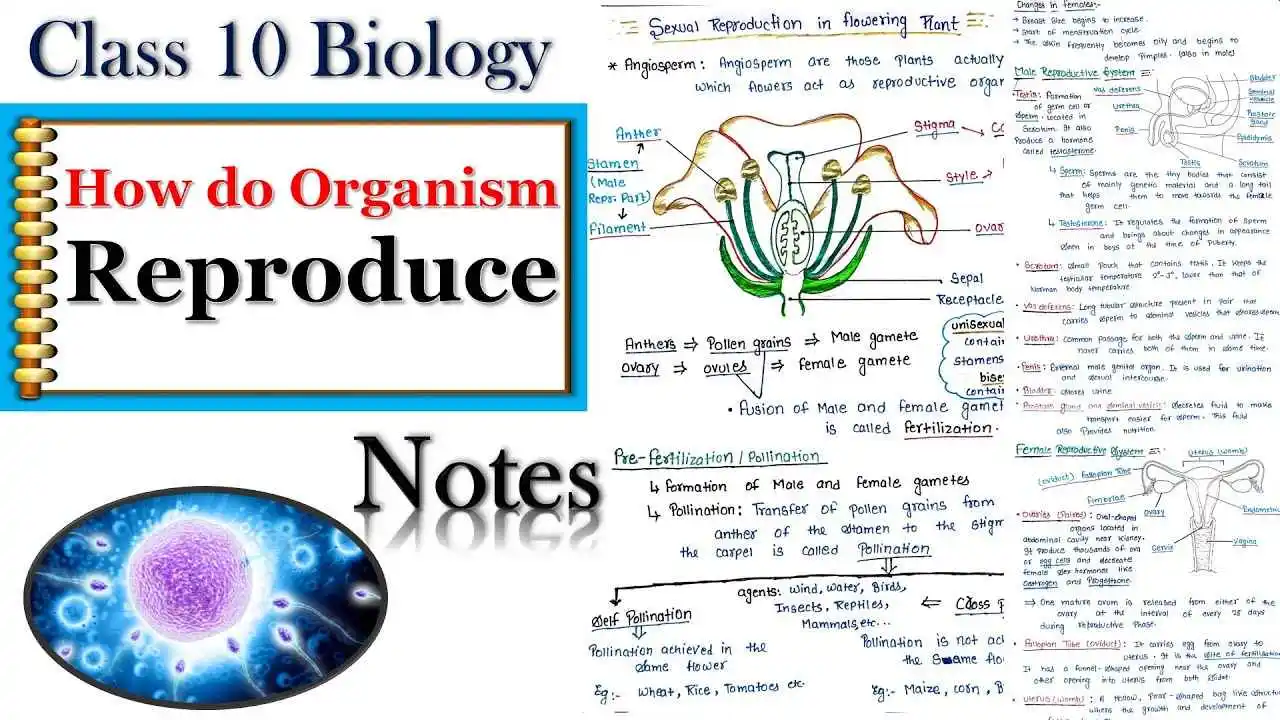Overview of Reproduction in Organisms: Class 10 Biology
How Do Organisms Reproduce Class 10 Solutions? Reproduction in organisms is a fundamental process in the living world that ensures the continuation of a species. It involves the creation of new individuals through the fusion of male and female gametes. In organisms, reproduction can be sexual, involving the combination of genetic material from two parents, or asexual, where offspring are produced by a single parent through mitosis.
Sexual reproduction in organisms involves a series of steps, starting with gamete formation through meiosis. Male and female gametes unite during fertilization to form a zygote, which then undergoes development to form a new organism. Asexual reproduction, on the other hand, involves the production of genetically identical offspring through methods such as budding, fragmentation, or spore formation.
Reproduction is essential for the survival and evolution of organisms, allowing them to adapt to changing environments and maintain genetic diversity. Different organisms have evolved various reproductive strategies to ensure the success of their species. Understanding the mechanisms of reproduction in organisms is crucial for understanding the complexities of life and biodiversity on Earth.
Essential Concepts in Class 10 How Organisms Reproduce
There are several essential concepts to understand in class 10 about how organisms reproduce. One important concept is the difference between sexual and asexual reproduction. Sexual reproduction involves the fusion of male and female gametes, resulting in genetic variation among offspring. Asexual reproduction, on the other hand, involves a single organism producing offspring that are genetically identical to itself.
Another key concept is the importance of meiosis in sexual reproduction. Meiosis is a type of cell division that produces gametes with half the number of chromosomes as the parent cells. This ensures that when the male and female gametes fuse during fertilization, the resulting zygote has the correct number of chromosomes for the species.
Lastly, understanding the different methods of reproduction among organisms is crucial. While some organisms, like bacteria and yeast, reproduce asexually through processes such as binary fission and budding, others, like humans and animals, reproduce sexually. Studying the various reproductive strategies among different organisms can provide insight into how they have evolved to ensure the continuation of their species.
Class 10 NCERT Solutions for How Organisms Reproduce
Reproduction is a vital process for the survival and continuation of life on Earth. In Class 10 NCERT Solutions for How Organisms Reproduce, students learn about the various methods through which organisms reproduce, including asexual and sexual reproduction. Asexual reproduction involves the production of offspring from a single parent, leading to the formation of genetically identical individuals. This method is commonly seen in unicellular organisms like bacteria and protists, as well as in some plants and animals.
On the other hand, sexual reproduction involves the fusion of male and female gametes to produce genetically diverse offspring. This process requires the involvement of two parents and results in offspring that inherit traits from both parents. Sexual reproduction allows for genetic variation, which is crucial for the adaptation and evolution of species. Students also learn about the reproductive organs and processes in plants and animals, as well as the significance of reproductive health and contraception.
Overall, the Class 10 NCERT Solutions for How Organisms Reproduce provides a comprehensive understanding of the different modes of reproduction and their importance in the biological world. By studying this topic, students gain insight into the diversity of reproductive strategies employed by organisms and the fundamental principles that govern the continuity of life.
Common Questions and Answers on How Organisms Reproduce for Class 10
- One common question that students often have about how organisms reproduce is why it is necessary for living things to reproduce in the first place. The answer to this is that reproduction is essential for the survival of species and the continuation of life on Earth. Through reproduction, new generations of organisms are created, ensuring the perpetuation of the species. Additionally, reproduction allows for genetic variation, which is important for the adaptation of species to changing environments.
- Another common question relates to the different modes of reproduction that exist in the animal and plant kingdoms. Organisms can reproduce sexually, asexually, or through a combination of both methods. Sexual reproduction involves the fusion of gametes from two different parents to produce offspring with genetic variation, while asexual reproduction involves the production of offspring from a single parent without the involvement of gametes. Understanding the different modes of reproduction can help students appreciate the diversity of life forms on Earth.
- Students may also wonder about the significance of reproductive structures and processes in various organisms. For example, they may question why some organisms have complex reproductive structures while others have simpler methods of reproduction. The answer lies in the evolutionary adaptations of different organisms to their environments. Reproductive structures and processes have evolved over millions of years to maximize the chances of successful reproduction and ensure the survival of the species. Studying how organisms reproduce can provide valuable insights into the interconnectedness of life and the mechanisms by which living things continue to thrive and evolve.
Class 10 Biology: Understanding Reproduction in Organisms through Solutions
Reproduction in organisms is a crucial process for the continuation of a species. It involves the production of offspring either sexually or asexually. Sexual reproduction involves the fusion of male and female gametes to produce a new individual with a combination of genetic material from both parents. On the other hand, asexual reproduction involves the production of new individuals from a single parent, resulting in genetically identical offspring.
In sexual reproduction, organisms have specialized reproductive organs such as testes and ovaries that produce gametes. These gametes, which are sperm and egg cells, unite during fertilization to form a zygote. The zygote then undergoes cell division and differentiation to develop into a new individual. In contrast, asexual reproduction methods like budding, fragmentation, or spore formation do not involve the fusion of gametes and can result in rapid reproduction with minimal energy expenditure.
Understanding the different modes of reproduction in organisms is essential for studying biodiversity and evolutionary processes. It showcases the various strategies that organisms have developed to ensure the survival and successful reproduction of their species. By studying the mechanisms of reproduction, scientists can gain insights into the genetic diversity and adaptability of different species, contributing to our knowledge of the complex processes that drive life on Earth.
Letter To Editor Class 10
[Your Address]
[City, State, Zip Code]
[Date]
The Editor,
[Newspaper Name]
[Newspaper Address]
Dear Editor,
I am writing to express my concern about the increasing pollution in our city. As a resident, I have observed a significant rise in air and water pollution levels, which poses serious health risks to our community. The local government must take immediate action by implementing stricter regulations and promoting awareness programs. Education plays a crucial role in combating this issue. I urge you to publish articles highlighting these concerns so that more citizens can join the movement for a cleaner, healthier environment.
Sincerely,
[Your Name]
[Your Contact Information]
This letter serves as an example for students in Class 10, demonstrating how to effectively address community issues through formal writing.






[…] How Do Organisms Reproduce Class 10 Solutions […]